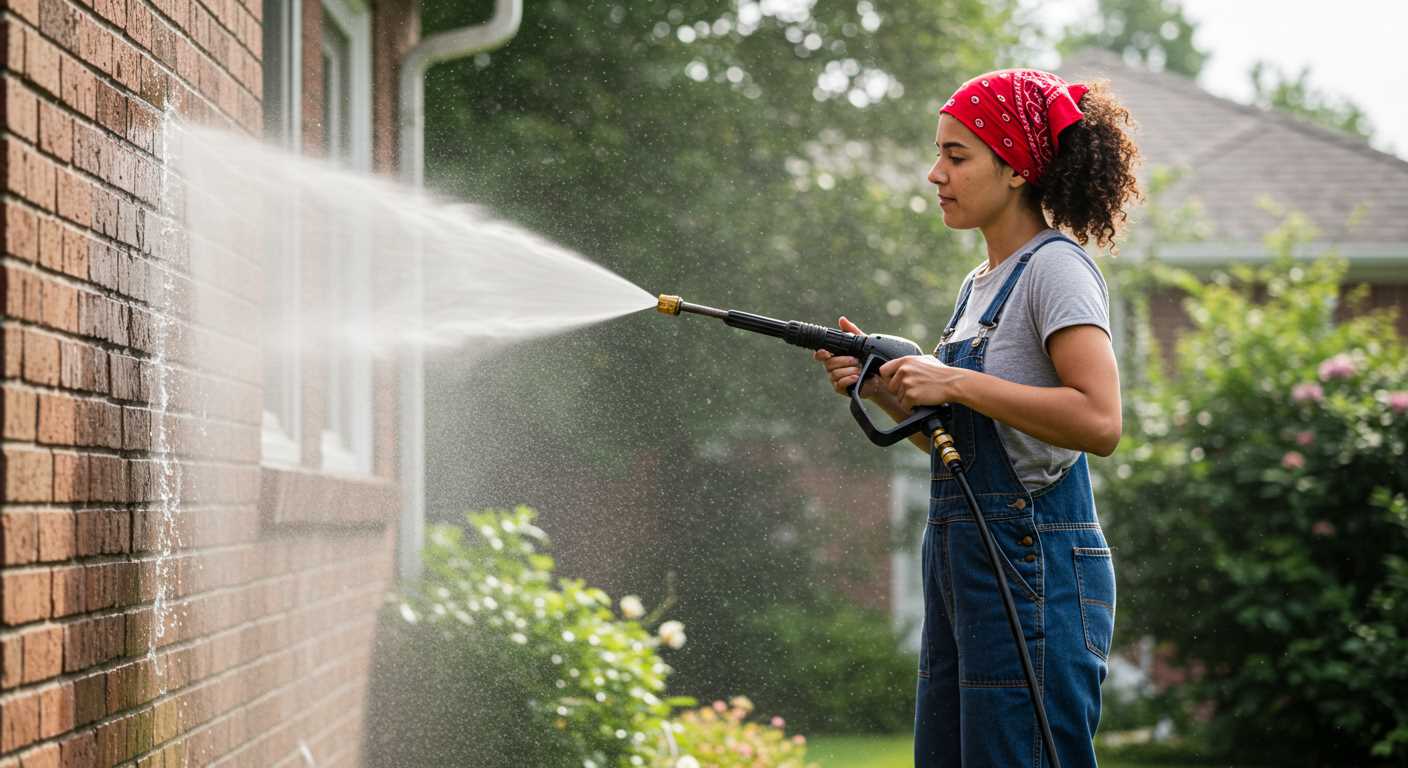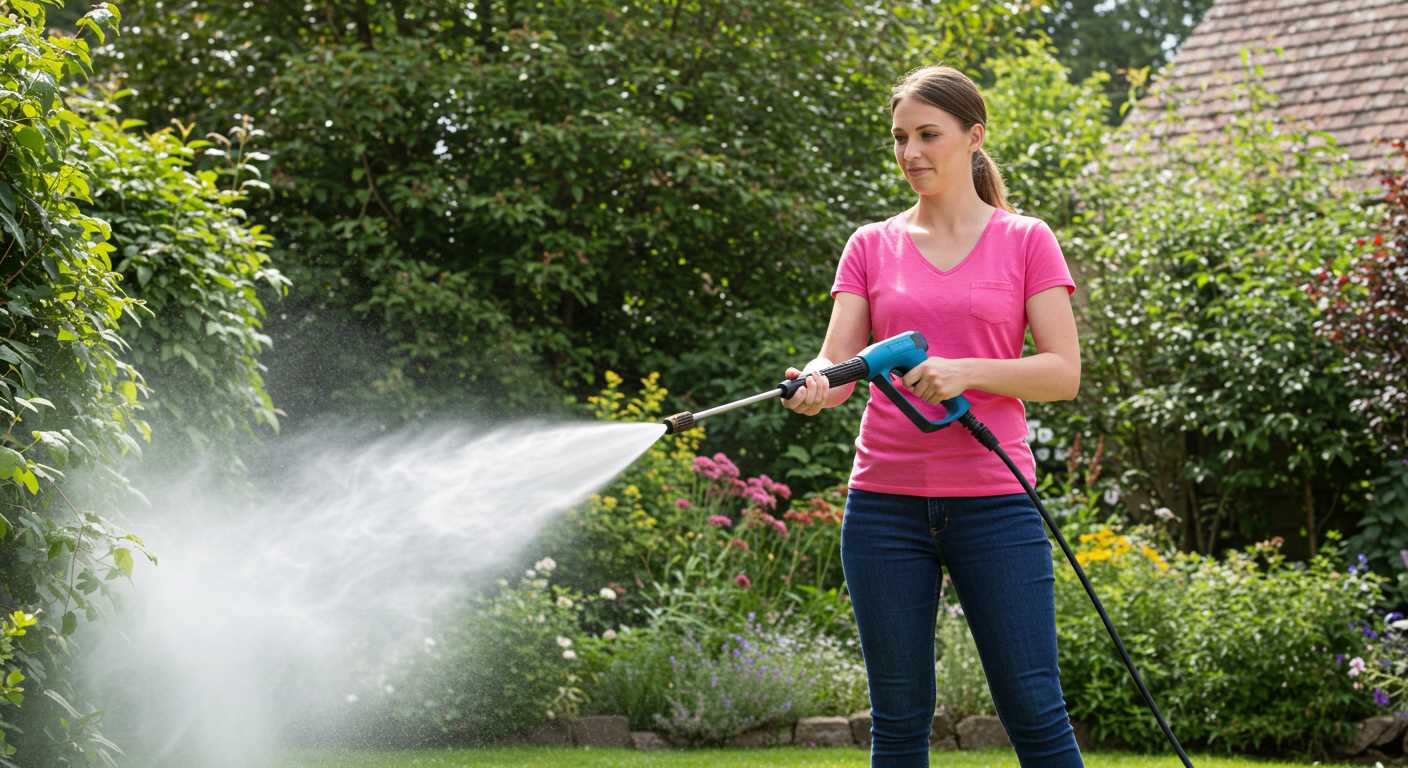




First, ensure you have a replacement o-ring on hand, as this is often the source of unwanted leaks. After years of working with various models, I found that worn-out seals are usually the first culprits. You can find these in most hardware stores or online, making them easy to acquire.
Begin the process by disconnecting the tool from the water source and allowing it to drain completely. I recall a time when I hastily skipped this step, only to get drenched when the residual water gushed out. Once it’s dry, carefully unscrew the nozzle from the handle. This step requires a steady grip, as some models can be quite stubborn.
Next, inspect the o-ring and washer. If you notice any cracks or deformities, replace them immediately. I’ve often seen that even a tiny crack can lead to significant issues. After replacing the seals, reassemble the components and test for leaks. A quick spray of water will help you identify any remaining issues.
Lastly, maintain regular checks on your equipment. Regular maintenance will prevent these problems from recurring. I’ve learned that a few minutes of inspection can save hours of frustration down the line.
Identify the Source of the Leak
Start by inspecting the connections between the nozzle and the lance. A common culprit is the O-ring or rubber seal that sits within these joints. If it appears damaged or worn, replacing it can resolve the issue. I recall a time when I had a persistent drip; a simple O-ring swap saved me from a complicated fix.
Next, examine the wand itself. Cracks or holes in the exterior can lead to water escaping under pressure. If you spot any visible damage, a replacement might be necessary. I once encountered a wand that looked fine but had a hairline fracture, causing frustration until I discovered the culprit.
Check the Hose
Don’t overlook the hose connecting your equipment. Abrasions or kinks can create weak points that lead to leaks. I remember helping a friend troubleshoot his setup; it turned out a slight twist in the hose was the source of his issue. Ensuring the hose is straight and free from damage can make a significant difference.
Inspect the Trigger Mechanism
The trigger mechanism can also be a source of leaks. Over time, the internal components can wear down, leading to drips. I recommend disassembling the trigger to examine the seals and springs inside. A thorough cleaning and a replacement of worn parts can restore function and eliminate leaks. If you’re unsure about any steps, consulting your manual or a professional can provide clarity.
For additional insights, you might find it worthwhile to explore resources such as how long to reheat xmas pudding in pressure cooker. While it may seem unrelated, understanding pressure dynamics can be beneficial in troubleshooting equipment like this.
Gather necessary tools and materials
Before tackling the issue at hand, ensure you have the right equipment and supplies on hand. Here’s a concise list of what you’ll need:
- Wrench set – for loosening and tightening fittings.
- Screwdriver set – both flathead and Phillips for various components.
- Replacement O-rings or seals – compatible with your model.
- Thread seal tape – to prevent future leaks.
- Utility knife – for cutting tape or old seals.
- Cleaning cloths – to wipe down surfaces and remove debris.
- Bucket – useful for catching any residual water during repairs.
Additional materials
Depending on the specific issue, you might also consider:
- New nozzle – if the current one is damaged.
- Replacement hose – if there are visible cracks or leaks.
- Lubricant – silicone spray can help with sealing and maintenance.
Ensure you check compatibility with your equipment model. For those looking to enhance their cleaning capabilities, consider a pressure washer for gutters that can complement your setup effectively.
Disassemble the Cleaning Equipment Nozzle
Begin by disconnecting the sprayer from the power source. This ensures safety and prevents accidental spraying while you work. Once disconnected, place the assembly on a stable surface to facilitate disassembly.
Remove the Nozzle
Loosen the nozzle by turning it counterclockwise. If it’s stuck, a gentle tap with a rubber mallet can help. Use a cloth to grip it if your hands slip. Keep the nozzle aside for inspection later.
Detach the Handle
Next, locate the screws or bolts securing the handle to the main body. A screwdriver or socket wrench will be needed here. Carefully remove these fasteners and set them in a safe place to avoid losing them. Once the handle is free, you should be able to pull it away from the body. Check the O-rings and seals at the joint for wear and tear.
With the handle removed, examine the internal components for any signs of damage or wear. Pay close attention to any seals or gaskets that may need replacement. If everything looks fine, reassemble the unit by reversing the disassembly steps, ensuring all parts fit snugly and securely.
Inspect O-rings and seals for damage
Begin your inspection by closely examining the O-rings and seals. These components are often the culprits behind unwanted leaks. Look for any signs of wear, such as cracks, tears, or deformation. If the rubber feels hard or brittle, it’s a strong indication that it needs replacing.
Check for proper fitting
Ensure that each O-ring fits snugly in its designated groove. A loose fit can lead to gaps, allowing water to escape. If you notice any misalignment, carefully reposition the O-ring or seal to avoid further issues.
Substitute with quality replacements
If you identify damaged or worn O-rings, sourcing replacements is straightforward. Opt for high-quality materials that are compatible with your equipment. Using inferior substitutes can lead to recurring problems. I remember once using a cheap replacement that lasted only a few weeks before failing again. Investing in reliable parts pays off in the long run.
After replacing any faulty components, it’s wise to reassemble the unit and test for leaks before putting it back into regular use. This simple act can save you time and frustration later on.
Replace worn or damaged components
Once you’ve identified the faulty parts, it’s time to source replacements. I recommend checking local hardware stores or online retailers that specialise in cleaning equipment. Be sure to have the model number of your equipment handy, as this will help you find the correct components more easily.
O-rings are often the first to wear out. I’ve seen many cases where a simple O-ring replacement solved persistent leaks. When selecting new O-rings, ensure they are made from durable materials like nitrile or Viton for longevity under pressure.
If the nozzle or trigger is cracked or worn, that’s another area to address. I once had a customer who continuously dealt with water seepage until they replaced a damaged nozzle. It’s a quick fix and can dramatically improve performance.
Additionally, don’t overlook the need for new seals if you notice any signs of wear. Seals play a critical role in maintaining the integrity of connections. I’ve encountered instances where replacing a worn seal eliminated leaks entirely.
Before reassembly, lubricate new O-rings and seals with a light coating of silicone grease. This tip has saved me from many future headaches and ensures a snug fit, preventing premature wear.
Reassemble the pressure cleaning tool correctly
After replacing any worn components, focus on putting everything back together. Proper reassembly ensures longevity and performance.
- Start with the handle. Align it with the main body, ensuring that any locking mechanisms are properly seated.
- Insert screws or bolts, but do not tighten them fully yet. This allows for adjustments if necessary.
- Reconnect any hoses, making sure they fit snugly. Check for any alignment issues that could lead to future leaks.
- Replace any O-rings or seals that were previously removed. Ensure they sit evenly in their grooves to prevent future issues.
- Tighten all screws and bolts securely, following a crisscross pattern if applicable. This helps distribute pressure evenly across the assembly.
- Attach the nozzle, ensuring it clicks securely into place. A loose nozzle can lead to performance problems.
- Finally, do a visual check of the entire assembly. Look for any misaligned parts or gaps that could indicate a problem.
Once reassembled, test the unit without a load. This allows you to ensure everything is functioning correctly before resuming regular use. If you notice any irregularities, disassemble and inspect again. It’s better to catch a problem early than to deal with leaks later.
Test the Wand for Leaks After Repair
After reassembling the cleaning tool, it’s crucial to conduct a thorough examination to ensure everything functions as intended. Begin by connecting the wand to the water supply and turning on the unit. Pay close attention to any areas where components meet, particularly around the seals you replaced.
Check for Water Flow
While the system is operating, observe if water is flowing freely without any interruptions. If you notice a steady stream, that’s a good sign. However, if you see droplets or a steady leak, you’ll need to reassess the assembly. Sometimes, a minor adjustment or a tighter fit can resolve lingering issues.
Perform a Pressure Test
With the equipment running, use your hand to feel for any moisture around connections and joints. If you detect water, it may indicate that the seals have not been fitted properly or that a replacement part is still compromised. In such cases, turning off the machine and revisiting your earlier work is necessary.
After ensuring a secure connection, it’s wise to run the unit for a few minutes. This not only helps to identify leaks but also allows you to observe how the components behave under normal operating conditions. If everything holds up and no leaks are present, you’ve successfully restored your cleaning apparatus to working order.
Maintain the Wand to Prevent Future Leaks
Regular maintenance of your cleaning tool is key to avoiding issues down the line. After years of working with various models, I’ve found that consistent care can significantly prolong the life of the equipment. Here are my top recommendations:
Firstly, after each use, thoroughly clean the exterior and nozzle. Residue buildup can lead to blockages and increased stress on seals. A simple rinse with warm water can do wonders. Pay special attention to the tip and any attachments, as dirt can easily accumulate there.
Next, inspect the O-rings and seals regularly. Even if you haven’t noticed any leaks, wear and tear can develop over time. Replace these components preemptively rather than waiting for a leak to appear. I suggest keeping a small stock of O-rings and seals on hand tailored to your specific model.
Another tip is to avoid over-tightening connections. This can cause unnecessary strain on the fittings and lead to premature damage. Hand-tightening is usually sufficient to create a proper seal. If you find that you need to apply excessive force, it’s a sign that something may be misaligned or that a part needs replacement.
Store your equipment properly. Keeping it in a dry, sheltered place prevents moisture from corroding metal parts and causing deterioration in seals. If you live in a humid area, consider using silica gel packets in your storage space to absorb excess moisture.
Lastly, always consult your user manual for specific maintenance guidelines. Each model can have unique requirements, and following the manufacturer’s recommendations will help ensure longevity. Keep track of your maintenance schedule and perform routine checks, and you’ll find your cleaning tool remains reliable for years to come.
| Maintenance Task | Frequency |
|---|---|
| Clean exterior and nozzle | After each use |
| Inspect O-rings and seals | Monthly |
| Check connections for tightness | Before each use |
| Store in a dry place | Always |







.jpg)


